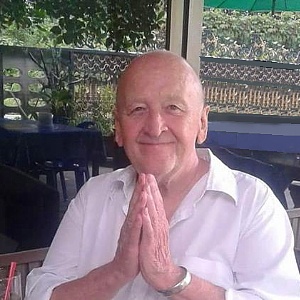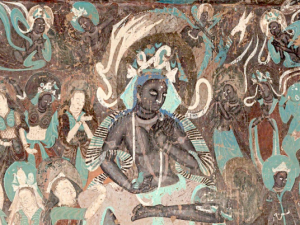
The working of human consciousness can be mindful or mindless, meaningful or meaninglessness, and youth does not always buy into what the traditional old-school wishes they would adhere to and believe in. Such was the case with Siddhartha Gautama. As a youth, living in conventional reality, he was dissatisfied with the teaching and training that his father’s tradition had drummed into him, and which subsequently caused him confusion, stress, and conflict.
The more he sensed that something was lacking in the traditional teachings, the more Siddhartha Gautama became dissatisfied with the luxurious, sensual, self-indulgent way of life that had been freely and generously offered, but, at the same time, gently imposed and subtly force upon him. The way he experienced his princely life did not quite fit his picture of how bliss and happiness ought to be.
At this point in his development, Siddhartha Gautama felt that something was missing, that something had been kept from him. In time, he came to distrust the imposed regimen, and the more he felt anxiety about what was missing at the heart of his life, the more he became disturbed, disillusioned, and disenchanted.
In the West, throughout recorded, cultural history, similar disparities regarding questioning the status quo had also been happening within the hearts of inquisitive youths and innovative thinkers, echoing all the way back to and through the ancient Greeks and into so-called Oriental lore. Indeed, this sort of questing is the stuff of which science and literature have been made over centuries, whether we think of groundbreakers from Euclid (c. 300 BCE) to Bruno (1548–1600) or from Homer’s Odysseus to Joyce’s Daedalus, just to pinpoint a few. The youthful Buddha fits into the pattern of this search for new truths, albeit with a particularly unique bent.
Using a literary image to illustrate how such innovative thinking might have arisen, we may imagine the figure of a youth standing upon the crest of a great, towering cliff, in a wide, wild, open landscape, facing a steep precipice that yawns deeply, dropping away into an empty, invisible, endless void.
The youth is no longer capable of stepping back into safe space. The youth is unsure and unsteady of foot, full of fear, trembling, and scared. Feeling a little like a comic jester indulging a tragic-comic farce, yet yearning still as a hero who is questing after a curious truth, the youth stands with an uncertain but courageous mind wanting to jump—to leap and fly, like a pupa become butterfly, into a vast, open, beckoning-yet-terrifying void.
The youth is feeling an intractable fear of heights, a fear of falling and meeting an abrupt and unceremonious end. The youth is full of anxiety, anguish, and angst, driven by desperation, despair, and dread. The youth is full of fear in the face of the threat of impending non-existence, full of fright in the face of lost identity; freezing with terror at the thought of losing a sense of “being” as an existing, continuing, abiding self.
The youth feels an angst so great that even traditionally assumed foundations and fixed concepts of grasped duality and solid reality begin to shiver, quiver, and shake loose. The universe, instead of seeming to be a stable friendly, solid, fixed entity, becomes an ever-changing, incomprehensible, unending, impersonal yet holistic process-in-motion, made up of flickering, fleeting, pulsating, energy in a vast incomprehensible cosmos with no known beginning nor ending.
Our courageous yet uncertain youth feels wholly isolated, lonely and alone in his solitary quest. Alienated, with no one to help deal with this disorientation. It is as if those who formerly offered protection have now abandoned the youth and are no longer there to care as the youth humbly and vainly attempts to reach, to stretch out and touch the figurative hem of the aerial gown of a humming, singing impersonal, indifferent, incomprehensibly vast majestic cosmos—like an inconsequential mendicant, fawning and begging for clarity.
The youth is not only solitary. There is also no creator-deity to help him. The God idea is dead. The world has eventually come of age. The youth was formerly immature, but the time has come for the youth to face these struggles now any help from anywhere. It is time to grapple with reality, although what is strictly, factually “real” is still continually, capriciously eluding, bemusing, and confusing.
Once able to observe the delicate flow of nature clearly, closely, and carefully, the youth is no longer able to view the cosmos as having a comprehensible, idealistic sense of oneness, unity, and coherence. The crutch of conceptualizing the universe as an objectively solidly spinning concrete entity, as a fixed and unchanging reality, has now been irreparably crushed and no longer works.
While seemingly “objective” perception connotes being based upon analytic, empirical duality as an intellectual reality, the abstraction of mere theory does not encompass the totality of reality. Such theory only works as a tool, and a theory of solid-state physics alone cannot convey “the way it is” in terms of sub-atomic physics, with evolving, changing waves of energy perpetually arising and ceasing, disappearing and reappearing, within an ever-changing process of nature.
By contrast, although there is much to be experienced within the “subjective-realm,” “subjective” questing soon too becomes confusing. Humankind is equipped with the tools to see “the way it is,” but does not know how to hone and utilize these tools properly. Instead, we color, contaminate, taint, and change our perception of overall cosmic and individualistic human nature, with feelings and emotions, spurious notions and often even obsessive devotions.
We corrupt pure perceptions with the bias of selfish “likes” and “dislikes,” flavoring and tainting perceptions through emotion-out-of-proportion, and then suffer the consequences, by developing distorted, disproportionate views of empirical experience, thus creating aberrations comparable to silver ore being contaminated with mental dross, like poison perpetually polluting its purity.
At first, our youth had falsely believed that these feelings and sensations constituted a true “self,” holding the conventional worldly view of “selfhood” with the hardcore devotion and addictive delusion common to worldly earthlings. But unconscious dissimulation, deception, and delusion lead to disorientation and confusion. A feeling of being on the wrong track catapults the confused quester down into disdainful, distasteful, disgusting states of insecurity and even self-hatred.
Deep inside, the youth knows that because the purity of moral choices have been compromised, there is a paucity of meaningful authentic intention and right action—a deficiency of authenticity—so the youth develops into disliking and despising the so-called self for its moral-duplicity.
There is more to say about where this comes from, but for mow we have run out of space. Further adumbration will have to wait until part two of this article.
Related features from BDG
How I Became a Theravada Buddhist
Echoes of Peace from the Hipster 50s and 60s
A Reminiscence About My Theravada Teachers












